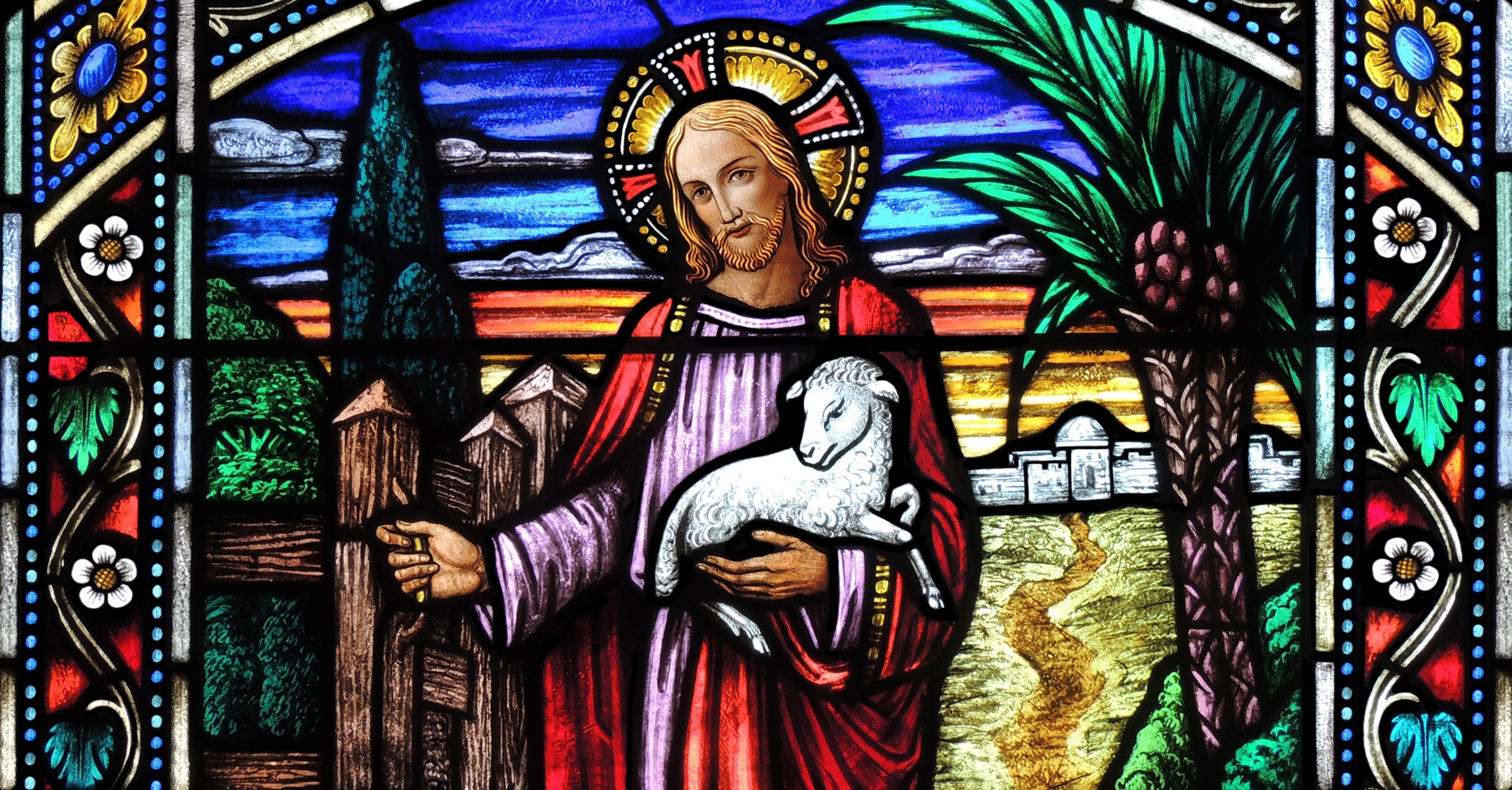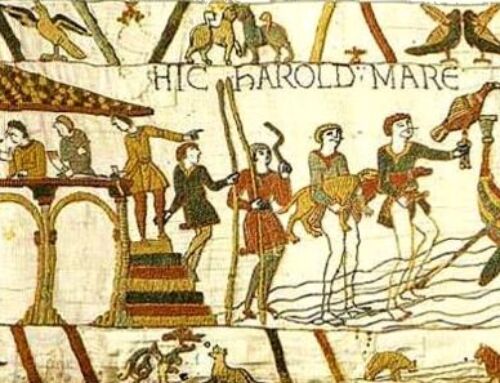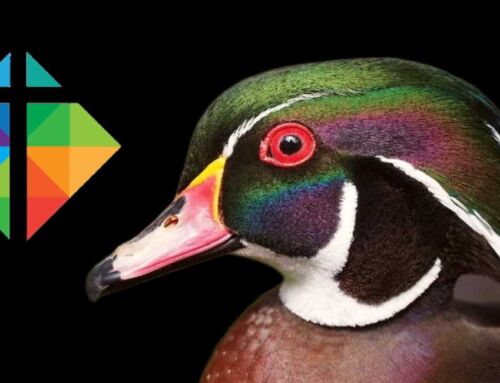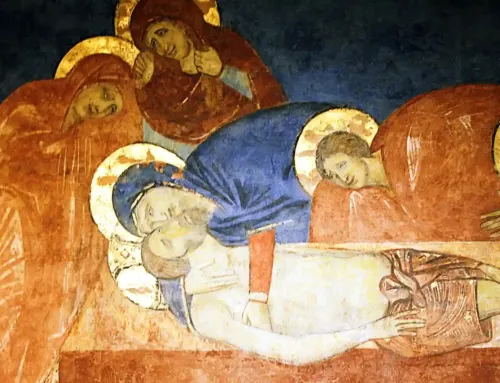The Shepherd
English composer, choirmaster and conductor, John Rutter, sets the most famous of all psalms (Psalm 23, “The Lord is my Shepherd”) to music in an exquisite piece of art that incorporates voice, orchestra and vivid musical imagery.
This commentary is the first of two on Rutter’s piece. Part 1 focuses on the Good Shepherd, Part 2 on the sheep. I suggest that you take a few moments to listen to the gorgeous arrangement all the way through one time, focusing on the roles the harp and the oboe play in illustrating the story of the shepherd. Afterward, or when you have time, read my analysis of these two melodious instruments in the commentary below. (I offer an analysis of the voices in the second part.)
Here’s a hint about what you’ll hear in your first review: Rutter uses the harp and the oboe as leitmotifs for the person and action of the Good Shepherd. Giving it our best spiritual interpretation, we can say that these to instruments signify the two natures of Christ, divine and human. The following five minute video will refresh the soul of anyone who takes the time to listen.
The performance (duration, 5:10)
The lyrics
The lyrics of the psalm may seem unusual to those who are unaccustomed to the Shakespearean English of the King James Bible from which the psalm is taken:
The Lord is my shepherd: therefore can I lack nothing.
He shall feed me in a green pasture: and lead me forth beside the waters of comfort.
He shall convert my soul: and bring me forth in the paths of righteousness, for his Name’s sake.
Yea, though I walk through the valley of the shadow of death, I will fear no evil: for thou art with me; thy rod and thy staff comfort me.
Thou shalt prepare a table before me against them that trouble me: thou hast anointed my head with oil, and my cup shall be full.
But thy loving-kindness and mercy shall follow me all the days of my life: and I will dwell in the house of the Lord forever.
The harp
The mellifluous harp is undoubtedly the queen of all stringed instruments. By its very nature, the harp imparts a special aura of grace and beauty to the movement of the music. Here is what it means and what you should listen for:
- As if descending from on high, the silky, gentle sound of the harp initiates the whole piece.
- The glissando (a series of notes wafting downward) gives the listener the sensation of heavenly grace guiding the sheep.
- The harp is silent while the sheep walk through the Valley of Death with the Shepherd; it is replaced by violins that gently accompany the journey.
- It picks up again only when the sheep emerge and sing happily, “And my cup shall be full”!
- The glissando also re-appears at the end to reaffirm that the grace of God, seemingly absent in the Valley, has actually accompanied the sheep as an unseen presence throughout the dark journey.
- The two well-positioned glissandos of the harp form an inclusion at the beginning and at the end of the piece.
The harp also has a special role in setting the pace of the journey:
- At the beginning, the rhythmical plucking of the harp indicates the Shepherd’s footsteps steadily moving toward the goal of the Father’s House and leading or “going before” the sheep, as St. John’s Gospel puts it (John 10:4).
- At the end of the piece, when the sheep have emerged from the Valley of Death and are nearer the House of the Lord, the plucking sound is now absent, replaced by the more fluid motion of the other string instruments and increasing intensity of the music and joyful voices, almost as if the steady walking has turned into an excited running toward their goal.
The oboe
There is hardly a more fascinating instrument in the whole orchestra than the oboe. Its use here signifies the lovely and mesmerizing voice of the Shepherd leading the sheep throughout the entire journey.
In the gospel of John, the Good Shepherd says, “My sheep hear my voice. I know them and they follow me…they will not follow a stranger’s voice” (John 10:4-5). His voice, like the music of the oboe, is lyrical and attractive, a kind of Pied Piper of the Spirit. What to listen for:
- While the sheep are traversing the Valley of Death, the oboe’s sound only intermittently punctuates the music. There the male and female voices, previously alternating verses, are singing in unison or in closely interwoven phrasings of a low pitch that modulates only four notes above and below center. The feeling is one of a close-knit group staying near their Shepherd, vigilant, walking carefully together in unknown territory.
- Notice that the harp’s cascading glissando is balanced by the oboe’s animated arpeggio (a series of notes rising excitedly from low to high) twice in the latter part of the piece signifying the exuberant feeling of liberation from the Valley of Death and, in the end, the “going up” to a high place of safety.
- The oboe’s sense of calm throughout, however, contrasts with its two joyful outbursts at the end. Before the most intense moment when the sheep arrive at their final destination, there is a sharp, sudden arpeggio, setting up the rise of the voices and giving the impression that the Shepherd has enthusiastically separated Himself from the group and run up to the House of the Lord to prepare a place for the sheep.
The overall movement of the piece is one of descent and ascent, or in theological terms, dying and rising. The sheep travel with their Shepherd from the relative comfort of a “green pasture” into the dangerous valley and, going through it, they climb upward to a high place of safety in the House of the Lord.
The end point of their journey is the infinite peace of the Father’s House!

Soul Work
Take time out of your busy schedule, when you can, and revisit this magnificent piece of music numerous times. There are no accompanying visuals, so you may close your eyes and absorb the music in a state of perfect attentiveness to what you are hearing.
Attune your senses to the harp, both in its gracious glissandos and in the adamant forward footstep movement of its thrumming chords. Follow the attractive call of the oboe as the Shepherd invites you at every stage of your life to enter more fully into His grace.
Imagine following Him who “goes before His sheep” in truth and beauty. He is Truth. He is Beauty Incarnate. He is leading you. In your times of peace and favor He is there. In times of darkness and encounter with evil He is there. In times of joy and fervor He is there.
Imagine His childlike joy as He separates from the flock, runs up the hill to the House of the Lord, and flings open the doors of the Kingdom to you at the end of your journey!
“Come, enter into the joy of your Master” (Matthew 25:23).




Leave A Comment